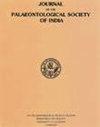实验室培养实验中内陆架底栖有孔虫群落对不同溶解氧浓度的响应
IF 0.5
4区 地球科学
Q4 PALEONTOLOGY
Journal of the Palaeontological Society of India
Pub Date : 2024-06-11
DOI:10.1177/05529360241254215
引用次数: 0
摘要
溶解氧是大多数海洋生物的重要参数,在不久的将来,由于沿岸水域的人为富营养化, 溶解氧可能会下降。由于溶解氧通常与其他几个参数(尤其是有机物)共同变化,因此很难通过实地研究来评估溶解氧枯竭对海洋底栖生物群落的影响。受控实验室培养实验有助于评估特定参数对海洋生物的影响。有孔虫占海洋底栖生物的很大一部分,少数物种容易受到缺氧的影响。以前的大多数培养实验都是使用单个底栖有孔虫物种的分离标本。虽然这些研究有助于了解单个物种对特定参数的反应,但要了解底栖有孔虫群落水平的反应,还必须扩大这些研究的规模。在此,我们在实验室培养实验中评估了浅海潮下带底栖有孔虫群落对五种不同氧气浓度(1.67 mL/L 至 5.01 mL/L)的群落响应。在中等氧浓度下,底栖有孔虫的活体丰度相当高,而在较低和较高氧浓度下,活体丰度均有所下降。溶解氧的降低导致 pH 值下降,使死亡的底栖有孔虫保存不佳。同属物种的相对丰度变化趋势不同,表明物种对溶解氧的反应具有特异性。2.91 mL/L时的最大丰度和单个物种的不同反应清楚地表明,底栖有孔虫群落对溶解氧的反应是非线性的。本文章由计算机程序翻译,如有差异,请以英文原文为准。
Response of inner shelf benthic foraminiferal community to different concentrations of dissolved oxygen under laboratory culture experiment
Dissolved oxygen, a vital parameter for a majority of marine organisms, may decline in the near future due to anthropogenic eutrophication in coastal waters. The effect of depleting dissolved oxygen on the marine benthic community is difficult to assess from field studies, as dissolved oxygen often co-varies with several other parameters, especially organic matter. The controlled laboratory culture experiments can help to assess the effect of a specific parameter on marine organisms. Foraminifera constitute a substantial fraction of the marine benthic organisms, and a few species are vulnerable to depleted oxygen. A majority of the previous culture experiments have used isolated specimens of individual benthic foraminiferal species. Although such studies helped to understand the response of individual species to a particular parameter, they have to be scaled up to understand the community-level response of benthic foraminifera. Here, we assess the community-level response of the shallow subtidal benthic foraminiferal community to five different oxygen concentrations (1.67 mL/L to 5.01 mL/L) in a laboratory culture experiment. The living benthic foraminiferal abundance was considerably high at the intermediate oxygen concentration, whereas it decreased at both the lower and higher concentrations. The decreasing dissolved oxygen caused poor preservation of dead benthic foraminifera due to a drop in pH. The relative abundance trend of the species belonging to the same genus was different, suggesting a species-specific response to the dissolved oxygen. The maximum abundance at 2.91 mL/L and the varying response of individual species clearly suggest a non-linear response of the benthic foraminiferal community to the dissolved oxygen.
求助全文
通过发布文献求助,成功后即可免费获取论文全文。
去求助
来源期刊

Journal of the Palaeontological Society of India
PALEONTOLOGY-
CiteScore
1.10
自引率
16.70%
发文量
0
期刊介绍:
The journal is devoted to the publication of original papers and review articles dealing with all aspects of Paleontology, Paleobotany, Stratigraphy, Geochronology, Anthropology and Pre-history.
 求助内容:
求助内容: 应助结果提醒方式:
应助结果提醒方式:


